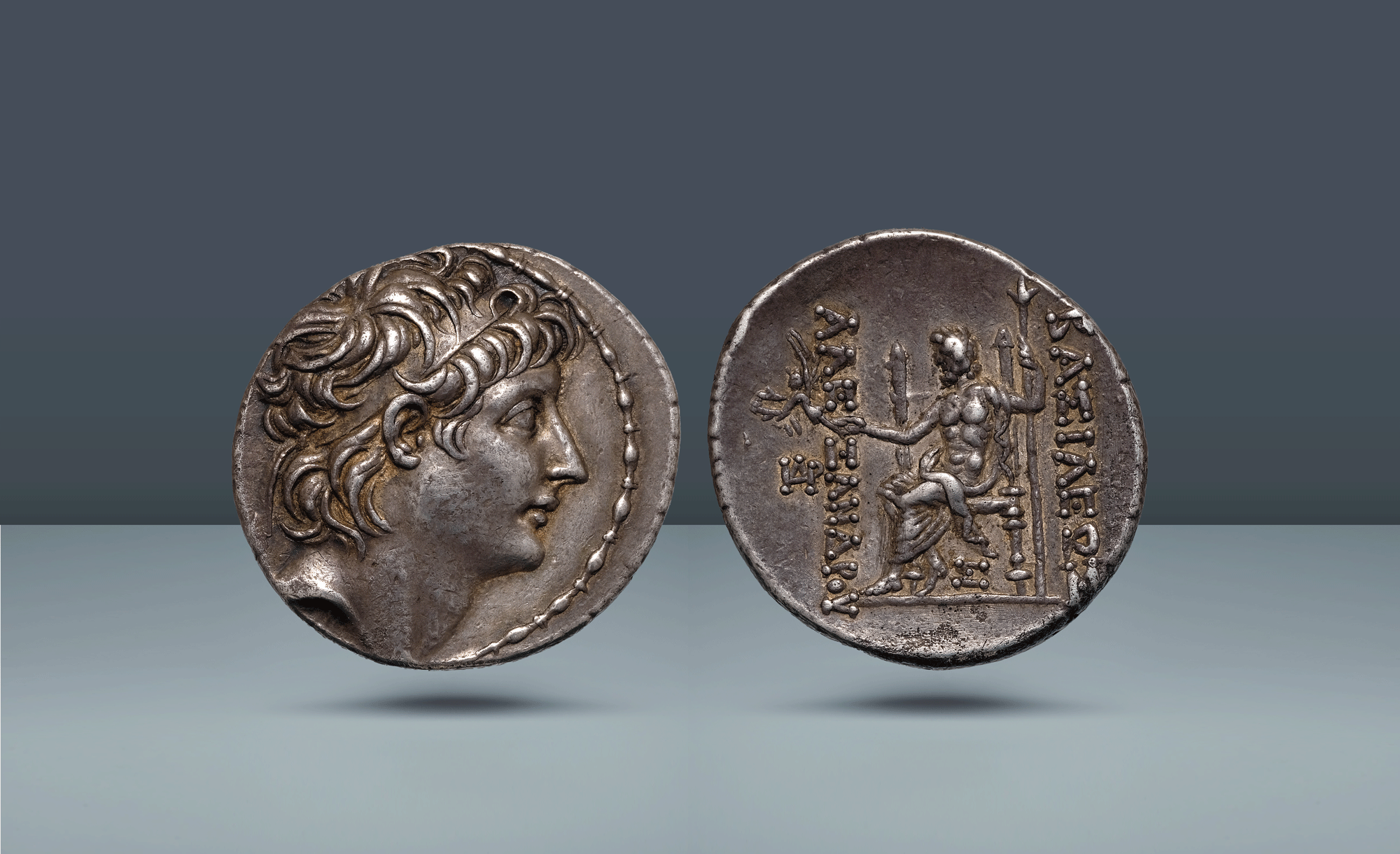Seleucid Empire, Asia Minor. Alexander II, Zabinas, 128-123 BC Antiochia on the Orontes, c. 128-122 BC
Seleucid Empire, Asia Minor. Alexander II, Zabinas, 128-123 BC Antiochia on the Orontes, c. 128-122 BC
AR Tetradrachm, 16.67g (29mm, 11h).
Diademed head of Alexander II r. Fillet border / BAΣΙΛΕΩΣ – AΛE – ΞANΔPOY Zeus seated l., holding Nike with wreath in r. hand and sceptre in l.; in l. field, monogram and below the throne, Ξ
Pedigree: Ex Münzen und Medaillen FPL 573, 1994, Lot 16/ Münzen und Medaillen 46, 15 Feb 2018, Lot 294
References: HGC 9, 1149d. SC 2219.2 (unlisted with Ξ).
Grade: Nicely toned with good strike. Minor porosity on the cheek. aEF
gk1993
Scroll down for more information about this coin.
Unlike many other Seleucid emperor’s, there is still some confusion as to who Alexander Zabinas actually was! While most scholars agree with the 2nd century Roman historian Justin that Zabinas was the adopted son of Antiochus VII, Morkholm argued that even according to Zabinas himself, he was the son of Alexander Balas and the grandson of Antiochus IV. Morkholm’s theory is actually born out numismatically. For example, Zabinas can be seen wearing a radiate crown with six rays extending from but not attached to the diadem. This design theme can also be found on Antiochus VI.
As for his epitaph "Zabinas", this is actually a Semitic name which can be translated as "the bought one". This may mean, especially according to the 20th century philologist Pierre Jouguet, that Alexander II was formerly a slave. This assumption should at least be considered due to a statement from the historian Polybius, in which he wrote that Alexander II was in fact named by the Syrians, because he was a "bought slave". This may be a result of a long-standing assumption he was a usurper and a fraud paid for by Ptolemy VIII.


